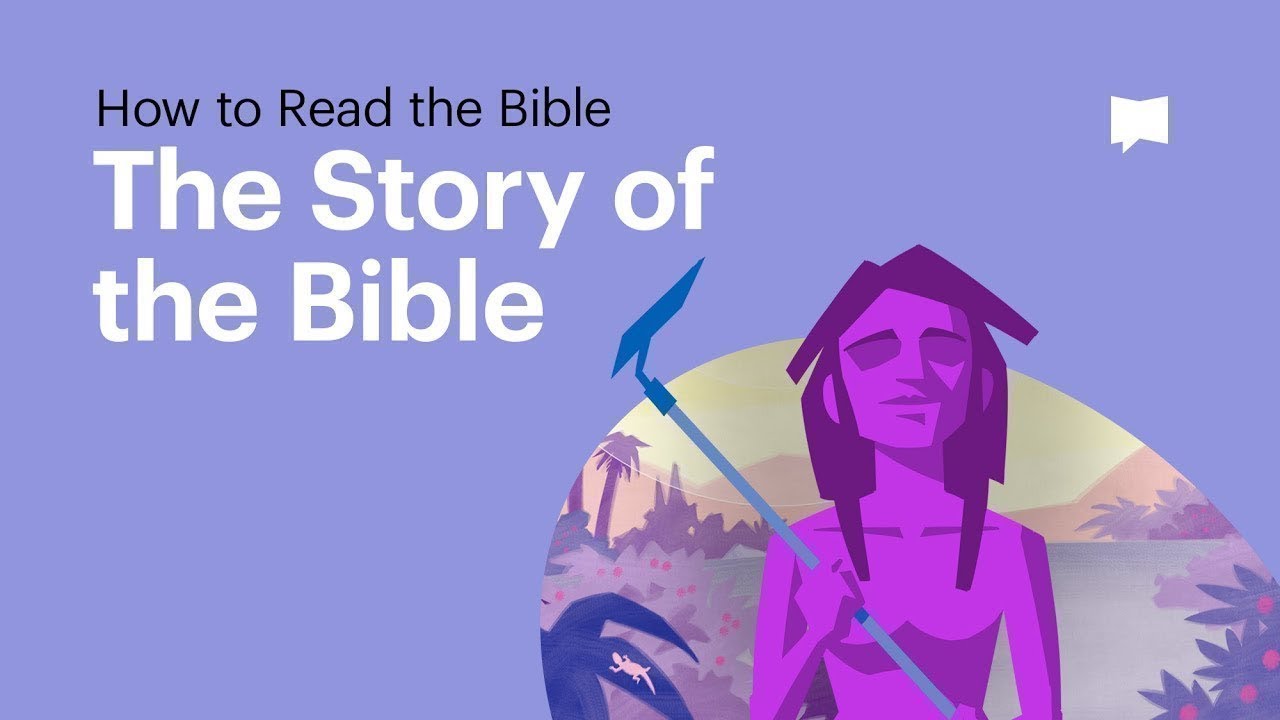The Holy Bible - A Comprehensive Summary Of The Biblical History
The Holy Bible (from the Koine Greek tà bibla, 'the books') is a collection of religious texts or scriptures that are sacred in many religions, including Christianity, Judaism, Samaritanism, and many more.
Bernard HorneApr 17, 202214 Shares330 Views

The Holy Bible(from the Koine Greek tà bibla, 'the books') is a collection of religious texts or scriptures that are sacred in many religions, including Christianity, Judaism, Samaritanism, and many more.
It is the most widely used religious document in the world. As an anthology, it is a collection of texts that were originally written in Hebrew, Aramaic, and Koine Greek and are presented in a variety of formats. Instructions, storytelling, poetry, and prophecies are just a few of the genres represented in these books. It is referred to as a biblical canon the collection of materials that have been regarded as part of the Bibleby a particular religious tradition or community. In general, religious believers believe that the Holy Bible was written as a result of divine inspiration, but they may interpret this in a variety of ways.
What Is The Full Name Of The Bible?
'Basic Instructional Book for Living Everyday' is the acronym for the Bible.
It is impossible to determine the sources of the first writings of the Israelites because they have been lost to time. As far as scholars are concerned, there is no consensus as to when the Jewish Hebrew Bible canonwas established in its current form. While some academics suggest that it was established during the reign of the Hasmonean dynasty (140–40 BCE), others contend that it was not set until the second century CE or possibly later.
Where Is The Original Bible?
The books of the Bible were originally written and transcribed by hand on papyrus scrolls, which are still in existence today. It is believed that no originals exist. The Dead Sea scrolls, which date from roughly 250 BCE to 100 CE, are the world's oldest surviving copies of the books of the Hebrew Bible, and they are the world's most ancient copies of any length. Tanakhis an alternative title for the Hebrew Bible that is composed of the first letters of the three portions of the Hebrew scriptures: the Torah ("Teaching"), the Nevi'im ("Prophets"), and the Ketuvim ("Prophets").
Tanakh is a phrase that is used to refer to the entire Hebrew Bible ("Writings"). The Torah is also referred to as the Pentateuch in some circles. According to Rabbinic Judaism, the Masoretic Version (originally written in Hebrew and Aramaic) is the most authoritative text; however, there is also the Septuagint (originally written in Koine Greek) from the third and second centuries BCE, which mostly overlaps with the Hebrew Bible.
Emergence Of The New Testament
When Christianityfirst emerged as an extension of Judaism, the Septuagint was used as the foundation for the Old Testament. Following in the Jewish tradition of producing and incorporating what is considered to be inspired by authorized religious works, the early Churchcontinued this practise, and the gospels, Pauline epistles, and other writings eventually came to be known as the "New Testament".
As the best-selling publication in history, the Bible is usually regarded as having sold more than five billion copies worldwide, according to current estimates. A profound direct influence on Western culture and historyhas occurred as a result of it.
Cultural and historical developmentshave been influenced indirectly by the study of the Bible through biblical criticism. The Bible is now being translated or is in the process of being translated into approximately half of the languages spoken throughout the world.
What Are The 4 Bibles?
The Four Evangelists are the authors who are credited with the production of the four Gospel stories in the New Testament, according to Christiantradition. They are Matthew, Mark, Luke, and John.
Bible Is A Collection Of Books
The Bible is not a single book, but rather a collection of books, the development of which is still not fully understood due to its complexity. Before being written down, the books began with stories that were passed down orally from generation to generation before being recorded. The Bible verseswere written and compiled by a large number of persons, some of whom are unknown, representing a diverse range of cultural backgrounds.
According to John K. Riches, a British biblical scholar:
"[T]he biblical texts were produced over a period in which the living conditions of the writers – political, cultural, economic, and ecological – varied enormously. There are texts which reflect a nomadic existence, texts from people with an established monarchy and Temple cult, texts from exile, texts born out of fierce oppression by foreign rulers, courtly texts, texts from wandering charismatic preachers, texts from those who give themselves the airs of sophisticatedHellenistic writers. It is a time-span which encompasses the compositions ofHomer, Plato, Aristotle, Sophocles, Caesar, Cicero, and Catallus. It is a period which sees the rise and fall of the Assyrian Empire(twelfth to seventh century) and of thePersian Empire (sixth to fourth century), Alexander'scampaigns (336–326), the rise of Rome and its domination of the Mediterranean (fourth century to the founding of the Principate, 27 BCE), the destruction of the Jerusalem Temple(70 CE), and the extension of Roman rule to parts of Scotland (84 CE)."
The books, which are considered scriptures (holy, authorized religious texts), were assembled by different religious communities into multiple biblical canons, which are listed below (official collections of scriptures).
During the 5th century BCE, the Torah, which is a collection of the first five books of the Bible and is known as the Torah (which means "law," "instruction," or "teaching") or Pentateuch (which means "five books"), was acknowledged as part of the Jewish canon. It was not until the third century BCE that the second collection of narrative histories and prophecies, known as the Nevi'im ("prophets"), was canonized. A third collection, the Ketuvim ("writings"), which contains psalms, proverbs, and narrative histories, was canonized somewhere between the 2nd century BCE and the 2nd century CE, and it is considered to be the most important of the three.
These three compilations, which were written primarily in Biblical Hebrew with some Aramaic passages thrown in for good measure, are collectively referred to as the Hebrew Bible or "TaNaKh" (an abbreviation for "Torah," "Nevi'im," and "Ketuvim"). In total, roughly 3000 years have elapsed since the Tanakh was first transmitted.
Additionally, Greek-speaking Jewsin Alexandria and other parts of the Jewish diaspora believed additional writings to be canonical, which were authored between 200 BCE and 100 CE but were not included in the Hebrew Bible. In the Septuagint, a translation of the Hebrew scriptures into Koine Greek (common Greek used by ordinary people), several extra texts were inserted. The Septuagint began as a translation of the Torah made approximately 250 BCE and developed over the course of several centuries. The Septuagint had all of the books now found in the Hebrew Bible, but they were restructured and had some textual variations, as well as extra scriptures inserted throughout the text.
During the Talmudic period(approximately 300–500 CE), the Masoretes began constructing the authoritative Hebrew and Aramaic text of the twenty-four books of the Hebrew Bible in Rabbinic Judaism. However, the exact date of their beginning is difficult to identify.
Mas'sora
A system of writing the precise letter-text with its vocalization and accentuation known as the mas'sora was developed in the sixth and seventh centuries by three Jewish communities from different parts of the world (from which we derive the term masoretic). The first codex form of the Hebrew Bible was made in the seventh century, and the first complete printed press version of the Hebrew Bible was published in 1488.
Vulgate - Translation Of Holy Bible
A translation known as the Vulgate was produced between 385 and 405 CE by the early Christian church, which included in its Old Testament the books that were in the Septuagint but were not in the Hebrew Bible. The Vulgate was produced between 385 and 405 CE by the early Christian church and was known as the Vulgate. The Vulgate not only brought stability to the Bible but also marked the beginning of the East-West Schism between Latin-speaking Western Christianity(dominated by the Catholic Church) and multi-lingual Eastern Christianity (headed by the Orthodox Church) (led by the Eastern Orthodox Church). The biblical canons of different Christian faiths differed not only in terms of the language of the books, but also in terms of their selection, structure, and text.
In the course of history, a variety of biblical canons have developed, with content that overlaps and differs from one denomination to the next.
The Holy Bible And Different Religions
The Bible and its authority are viewed differently by different religions around the world. The Bible is considered crucial to the Rastafari's religion, whereas the Unitarian Universalists consider it to be "one of many important religious writings," rather than "the only one." Muslims believe that the Bible represents the real unfolding revelation from God but as a result of corruption or distortion (in Arabic: tahrif) in the Bible, so the Quran was given to the Islamic prophet Muhammad in order to remedy this corruption or distortion (in Arabic: tahrif).

The Story of the Bible [Animated Explainer]
Impact Of The Bible On Literature And History
The Bible is one of the Christianity booksthat has had a significant impact on literature and history around the world, particularly in the Western world, where the Gutenberg Bible was the first book to be printed using movable type. According to the March 2007 issue of Time magazine, the Bible is a historical document "has done more to shape literature, history, entertainment, and culture than any book ever written. Its influence on world history is unparalleled, and shows no signs of abating."
John Riches, professor of divinity and biblical criticism at the University of Glasgow, offers the following perspective on the Bible's historical influence on various historical events:
"It has inspired some of the great monuments of human thought, literature, and art; it has equally fuelled some of the worst excesses of human savagery, self-interest, and narrow-mindedness. It has inspired menand women to acts of great service and courage, to fight for liberation and human development; and it has provided the ideological fuel for societies which have enslaved their fellow human beings and reduced them to abject poverty. ... It has, perhaps above all, provided a source of religious and moral norms which have enabled communities to hold together, to care for, and to protect one another; yet precisely this strong sense of belonging has in turn fuelled ethnic, racial, and international tension and conflict."
Text In Masoretic Style
According to the Nash Papyrus (2nd century BCE), a fragment of a pre-Mosoretic Text, specifically the Ten Commandments and the Shema Yisrael prayer, can be found in the Old Testament.
The Bible studyMasoretic Text is the Hebrew text of the Hebrew Bible that is considered authoritative. It identifies the books of the Jewish canon, as well as the specific letter-text of these biblical books, including their vocalization and accentuation, in addition to the books of the Christian canon. Most of the surviving Masoretic texts date back to about the 9th century CE, with the oldest complete copy of the Masoretic Text dating back to the 10th century (which is now missing its Torah section) dating back to the 10th century. Originally, the term "Keter" (crown, derived from the Arabic word taj) was used to designate this particular manuscript. Keter has come to refer to any whole text of the Hebrew Bible, or considerable section of it, that has been bound as a codex (rather than a scroll) and includes vowel points, cantillation marks, and Masoretic comments over time.
Pentateuch Of The Good Samaritan
The Pentateuch (Torah) is the only part of the Bible that the Samaritans accept as authoritative.
They do not recognize divine authorship or inspiration in any other book of the Jewish Tanakh, including the Pentateuch and the Talmud. There is a Samaritan Book of Joshua that is partially based on Tanakh's Book of Joshua, although Samaritans consider it to be a non-canonical secular historical record rather than a religious text.
Septuagint
It is believed that this column of uncial book from 1 Esdras was found in the Codex Vaticanus c. 325–350 CE, and it served as the foundation for Sir Lancelot Charles Lee Brenton's Greek edition and English translation of the Septuagint.
Beginning in the late 3rd century BCE and finishing by the year 132 BCE, the Septuagint, often known as the LXX, is a translation of the Hebrew scriptures and other associated works into Koine Greek.
It was first built in Alexandria, but it was eventually completed in other locations as well. Although it is not entirely known when or where each piece was translated, it is possible that some were translated twice, into two separate forms, and then edited again.
Pseudepigraphal Books
Pseudepigrapha is the works in which the authorship has been incorrectly attributed to them. The art in question can be falsely identified as such and not be considered a forgery, as forgeries are purposely dishonest. When it comes to pseudepigrapha, authorship has simply been misrepresented for a variety of reasons. Additionally, apocryphal and pseudepigraphic works are not the same thing. Pseudepigrapha is a literary category that contains all writings that claim to be sacred but are not included in the canon, whereas Apocrypha is a literary category that includes all writings, whether they are canonical or apocryphal.
The term "pseudepigrapha" is often used to refer to a large body of Jewish religious literature that was written between around 300 BCE and 300 CE and is referred to as such. It should be noted that not all of these works are pseudepigraphical in nature. (It can also refer to works of the New Testament canon whose authorship has been called into question.)
Conclusion
The first Biblical stories were passed down orally, and it was only later that they were written down by diverse authors. The Book 'Holy Bible', according to the majority of Biblical academics, was the first book ever written down. This might have occurred around 1450 BC to 1400 BC, depending on the source. Whatever it was probably around 3400 years ago or so.
Jump to
What Is The Full Name Of The Bible?
Where Is The Original Bible?
Emergence Of The New Testament
What Are The 4 Bibles?
Bible Is A Collection Of Books
Mas'sora
Vulgate - Translation Of Holy Bible
The Holy Bible And Different Religions
Impact Of The Bible On Literature And History
Text In Masoretic Style
Pentateuch Of The Good Samaritan
Septuagint
Pseudepigraphal Books
Conclusion
Latest Articles
Popular Articles

